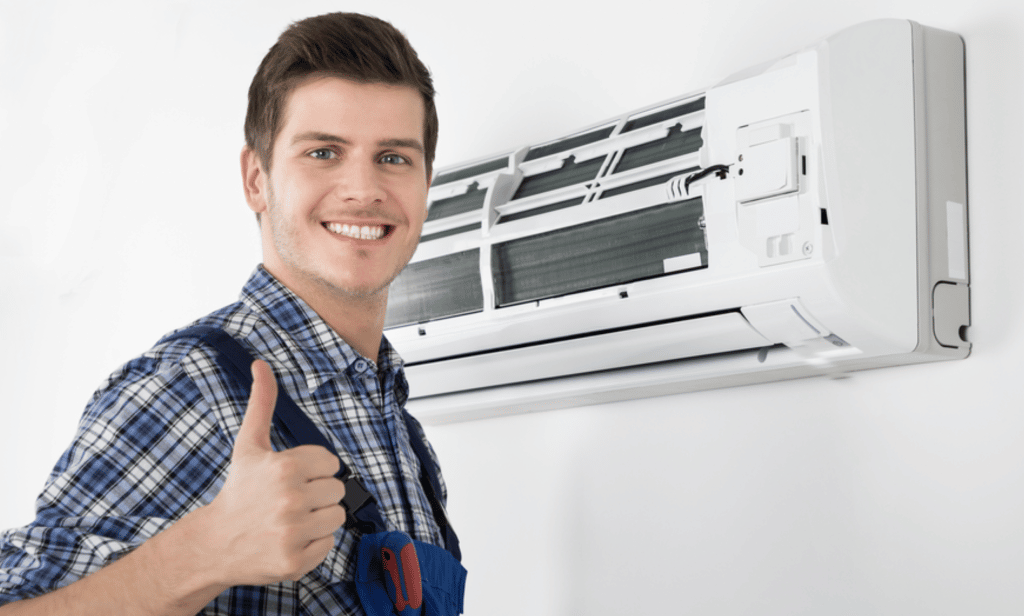If you’ve noticed that your home isn’t holding a steady temperature as well as it used to, or you have watched your energy bill slowly creep up, it’s probably time to take a look at your HVAC system. Small problems in your system can quickly start to impact functionality, and small increases to your energy bill will add up over time. Knowing the most common HVAC problems can help you diagnose any issues and get them fixed quickly, before they turn into larger, more expensive problems.
Depending on what’s wrong with your system, the solution may a simple DIY fix. In other cases, you may need to contact a professional technician for assistance. In the meantime, here’s an explanation of the most common HVAC problems.
1. Lack of Maintenance
The most common problem with HVAC systems is simply that they haven’t been maintenanced in a while. Regular service appointments keep your system running at peak efficiency. Routine maintenance includes a technician examining the whole system. They will clean the coils, check the Freon levels if applicable, and test the electrical components to make sure everything is working properly.
Gradually increasing energy bills without a change in usage, strange noises, and lack of airflow are all signs that it’s time for a tune-up.
2. Dirty Air Filter
Another very common HVAC problem is a clogged air filter. The air filter is one of the most important components of your HVAC system, and keep everything running as it should. The air filter is responsible for trapping debris, dust, and other particles so they don’t enter your home through the HVAC system. Over time, the air filter becomes dirty and can get clogged, reducing airflow. This makes your system work much harder to circulate air, causing quite a few problems.
A clogged air filter causes extra wear and tear on your system as it works harder to keep up with demand. The lack of properly flowing air can also lead to ice buildup on the coils, causing serious and costly damage to your system.
If you’re seeing ice buildup on your system’s coils and a lack of airflow, check your air filter. Filters should be inspected monthly and replaced as needed. Most are inexpensive and only take a few minutes to install, while leaving dirty air filters will only raise your energy bill.
3. Thermostat Issues
If your HVAC system is turned on but the temperature in your home isn’t changing, it could be a problem with the thermostat. With any thermostat issue, the first step is making sure the batteries are working. Try replacing the batteries and test the system.
If the batteries are fine and the thermostat still isn’t functioning, the thermostat itself might be faulty and will need to be replaced.
If it feels chilly in your home and the HVAC system is still blowing cold air, it could be that the temperature sensors in the thermostat aren’t working properly. This can cause your system to overcool or overheat your home beyond your needs, wasting energy and forcing you to continually adjust your thermostat.
4. Refrigerant Leaks
HVAC systems use a refrigerant to absorb heat and create cool air after it runs through compressors and evaporators. Older models typically use Freon, while newer models have started to use Puron, a less toxic alternative.
Some systems develop refrigerant leaks over time. As the cooling compound leaks out, the system loses its ability to moderate the temperature effectively. Refrigerant leaks can also be dangerous and are typically not a problem that you can fix on your own.
If your system’s refrigerant is emptying faster than you would normally expect, it is most likely leaking. If you suspect a refrigerant leak, it’s important to call a professional and have it repaired immediately, particularly is your system uses Freon.
5. Condenser Issues
The condenser is responsible for circulating refrigerant through your HVAC system. If the condenser isn’t working properly, it can cause a number of problems, including decreased airflow and efficiency. Common condenser issues include a broken or bent condenser fan, blown capacitor, or issues with the motor. If you notice that your system isn’t cooling or heating your home as well as it used to, it’s possible that the condenser is to blame.
Signs of a condenser issue include excessive fluid in the condensate drain pan, abnormally loud noises coming from the unit, and reduced cooling capability.
6. Ductwork Leaks
Another common problem with HVAC systems is leaks in the ductwork. These leaks can cause your system to lose up to 30% of its airflow, making it less effective and increasing your energy bills.
Signs that you might have leaky ductwork include higher energy bills, cold spots on your walls, and unusual noises, such as whistling, coming from the ductwork. If you suspect that your ductwork has leaks, it’s important to have it inspected and repaired by a professional.
Although these aren’t the only problems that can happen with your HVAC system, they are the most common that can steadily increase your energy bill. If you ignore the signs of an inefficient system, you risk wasting your money and living with higher energy bills, when the fix could be as simple as changing a filter or calling a professional.

